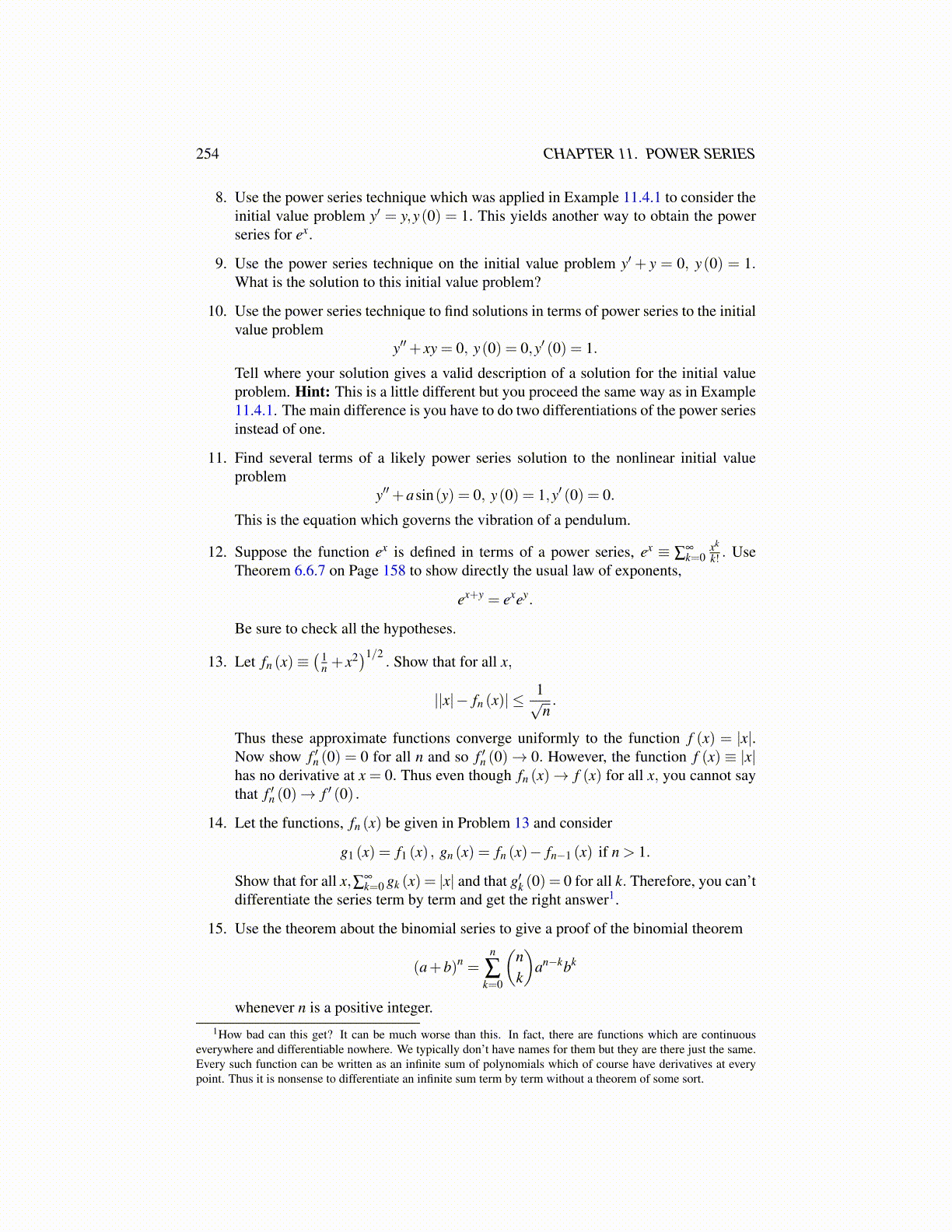
254 CHAPTER 11. POWER SERIES
8. Use the power series technique which was applied in Example 11.4.1 to consider theinitial value problem y′ = y,y(0) = 1. This yields another way to obtain the powerseries for ex.
9. Use the power series technique on the initial value problem y′ + y = 0, y(0) = 1.What is the solution to this initial value problem?
10. Use the power series technique to find solutions in terms of power series to the initialvalue problem
y′′+ xy = 0, y(0) = 0,y′ (0) = 1.
Tell where your solution gives a valid description of a solution for the initial valueproblem. Hint: This is a little different but you proceed the same way as in Example11.4.1. The main difference is you have to do two differentiations of the power seriesinstead of one.
11. Find several terms of a likely power series solution to the nonlinear initial valueproblem
y′′+asin(y) = 0, y(0) = 1,y′ (0) = 0.
This is the equation which governs the vibration of a pendulum.
12. Suppose the function ex is defined in terms of a power series, ex ≡ ∑∞k=0
xk
k! . UseTheorem 6.6.7 on Page 166 to show directly the usual law of exponents,
ex+y = exey.
Be sure to check all the hypotheses.
13. Let fn (x)≡( 1
n + x2)1/2
. Show that for all x,
||x|− fn (x)| ≤1√n.
Thus these approximate functions converge uniformly to the function f (x) = |x|.Now show f ′n (0) = 0 for all n and so f ′n (0)→ 0. However, the function f (x) ≡ |x|has no derivative at x = 0. Thus even though fn (x)→ f (x) for all x, you cannot saythat f ′n (0)→ f ′ (0) .
14. Let the functions, fn (x) be given in Problem 13 and consider
g1 (x) = f1 (x) , gn (x) = fn (x)− fn−1 (x) if n > 1.
Show that for all x,∑∞k=0 gk (x) = |x| and that g′k (0) = 0 for all k. Therefore, you can’t
differentiate the series term by term and get the right answer1.
15. Use the theorem about the binomial series to give a proof of the binomial theorem
(a+b)n =n
∑k=0
(nk
)an−kbk
whenever n is a positive integer.1How bad can this get? It can be much worse than this. In fact, there are functions which are continuous
everywhere and differentiable nowhere. We typically don’t have names for them but they are there just the same.Every such function can be written as an infinite sum of polynomials which of course have derivatives at everypoint. Thus it is nonsense to differentiate an infinite sum term by term without a theorem of some sort.